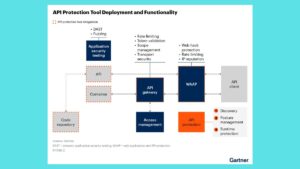What to Do After Employee Training is Over

Employee training is a vital part of any organization’s strategy to develop talent and enhance performance. However, the process doesn’t end once the training sessions are complete. What happens after the training is just as crucial in ensuring that the skills and knowledge gained are effectively applied in the workplace. Without proper follow-up, the benefits of training can be short-lived. Here’s what organizations should do after employee training to ensure long-term success.
1. Assess Knowledge Retention
One of the first steps after training is to evaluate how well employees have retained the information. This helps ensure that the key learning objectives were met. There are a variety of ways to assess knowledge retention:
- Post-Training Assessments: Quizzes or exams can be a useful tool to measure how much the employee has absorbed. These assessments should focus on the core concepts covered during training.
- Surveys: Employee feedback surveys allow trainees to share how confident they feel in applying the knowledge.
Why it matters: If employees haven’t retained critical knowledge, additional support or follow-up sessions may be necessary to reinforce key learnings.
Sources: According to Training Industry, effective post-training assessments help identify gaps in understanding, guiding the focus of future training programs.
2. Provide Opportunities for Practical Application
While training is often theory-based, the real test comes when employees apply their new skills in the workplace. Offering opportunities to implement what they’ve learned immediately after the training is essential for reinforcing their knowledge.
- On-the-Job Training: Allow employees to work on real tasks with the support of mentors or managers who can offer guidance.
- Simulations: For skills that require practice, such as software proficiency or customer interaction, setting up simulations can provide safe spaces to apply knowledge without the risk of failure.
Why it matters: Knowledge application strengthens learning and builds confidence. It ensures that employees understand how to translate training into real-world success.
Sources: The Harvard Business Review highlights that employees who are given chances to apply their training in a supportive environment are more likely to retain the information long term.
3. Schedule Regular Check-ins
After training, employees should not be left to navigate their new responsibilities alone. Managers should schedule check-ins to discuss how employees are applying the training to their daily tasks. These meetings can be used to:
- Provide additional support: Some employees may encounter difficulties in applying new skills and may need additional coaching.
- Offer feedback: Providing constructive feedback ensures that employees know what they’re doing well and where they need to improve.
Why it matters: Regular check-ins create an ongoing support structure, making it easier for employees to integrate their training into their work routine.
Sources: According to SHRM (Society for Human Resource Management), regular follow-up meetings are essential for reinforcing training content and addressing challenges early on.
4. Gather Feedback from Trainees
Employee feedback is crucial for continuous improvement. After training, it’s important to ask employees about their experiences and how they feel about the effectiveness of the training. Key questions include:
- Was the training material relevant to your role?
- What part of the training was most beneficial?
- Were there areas where you felt the training was lacking?
Why it matters: Gathering feedback helps you evaluate the effectiveness of the training program and identify areas for improvement. Additionally, it makes employees feel heard, fostering a culture of continuous learning.
Sources: According to Bersin by Deloitte, organizations that actively seek feedback from employees after training are better able to refine their programs for future success.
5. Foster a Culture of Continuous Learning
Training should be viewed as an ongoing process rather than a one-time event. Post-training activities should encourage employees to continue their learning journey. This can be done by:
- Offering additional resources: Share articles, videos, and webinars to deepen employees’ understanding.
- Creating learning groups: Peer-to-peer learning groups can provide support and help employees stay engaged with the material.
- Setting up mentorship programs: Pairing employees with mentors who can guide them as they continue to learn and grow.
Why it matters: Creating a culture of continuous learning ensures that employees remain up to date on industry trends and best practices, which directly benefits the organization’s overall performance.
Sources: LinkedIn Learning emphasizes that fostering a culture of continuous development is key to retaining top talent and enhancing organizational success.
6. Measure Training Impact on Performance
Finally, it’s essential to track how the training has impacted employee performance and business outcomes. By comparing performance data before and after training, you can gauge the return on investment (ROI) for your training programs.
- KPIs (Key Performance Indicators): Identify metrics that can be influenced by the training, such as productivity rates, sales figures, or customer satisfaction scores.
- 360-Degree Feedback: Collect feedback from colleagues, managers, and even customers to assess how well the employee is applying their new skills.
Why it matters: Measuring the impact of training helps you understand its effectiveness, justify your training investment, and make data-driven decisions about future training initiatives.
Sources: McKinsey & Company reports that organizations that evaluate the impact of training on business outcomes see higher performance levels and a more substantial ROI.
Conclusion
The completion of employee training marks only the beginning of a valuable process. By assessing knowledge retention, providing practical application opportunities, scheduling regular check-ins, gathering feedback, fostering continuous learning, and measuring training outcomes, organizations can ensure that the training investment translates into long-term success. A well-planned post-training strategy helps employees integrate their new skills into their daily roles, driving both personal and organizational growth.







